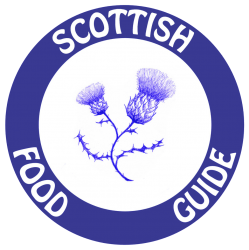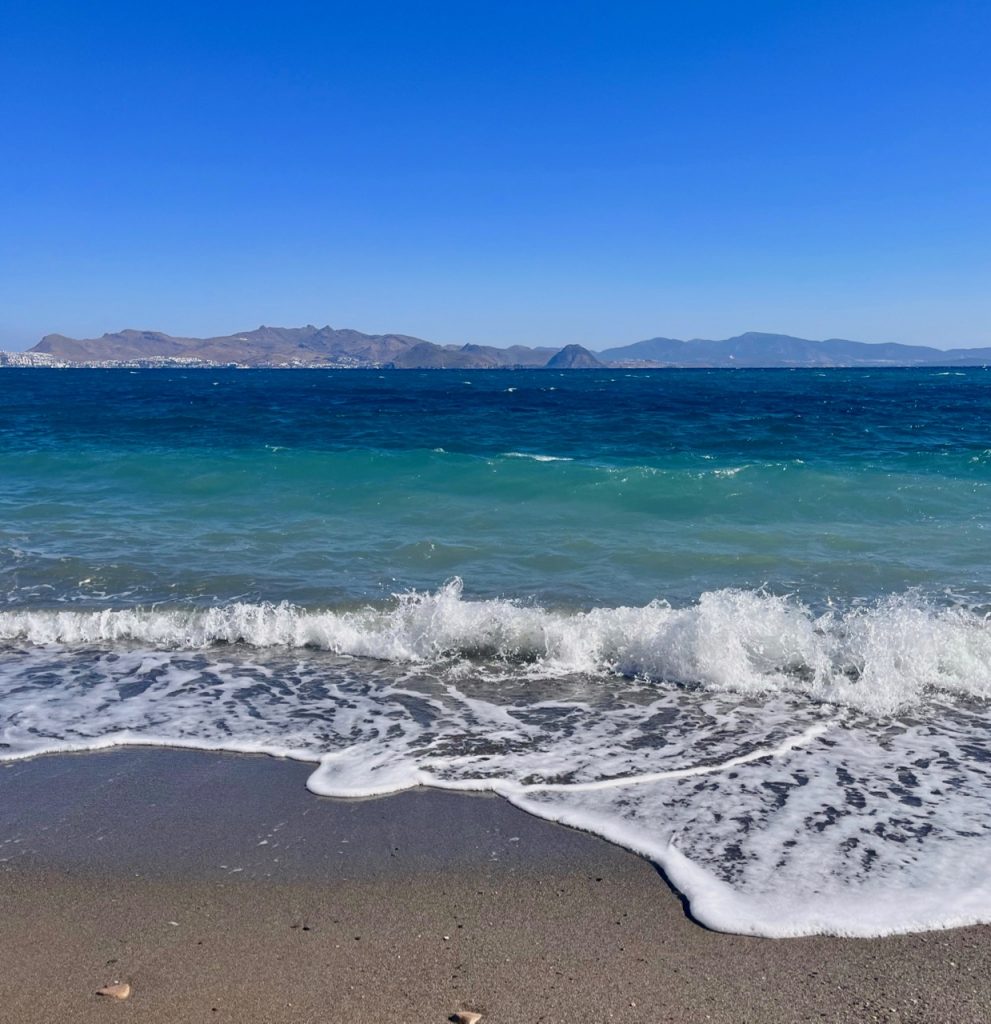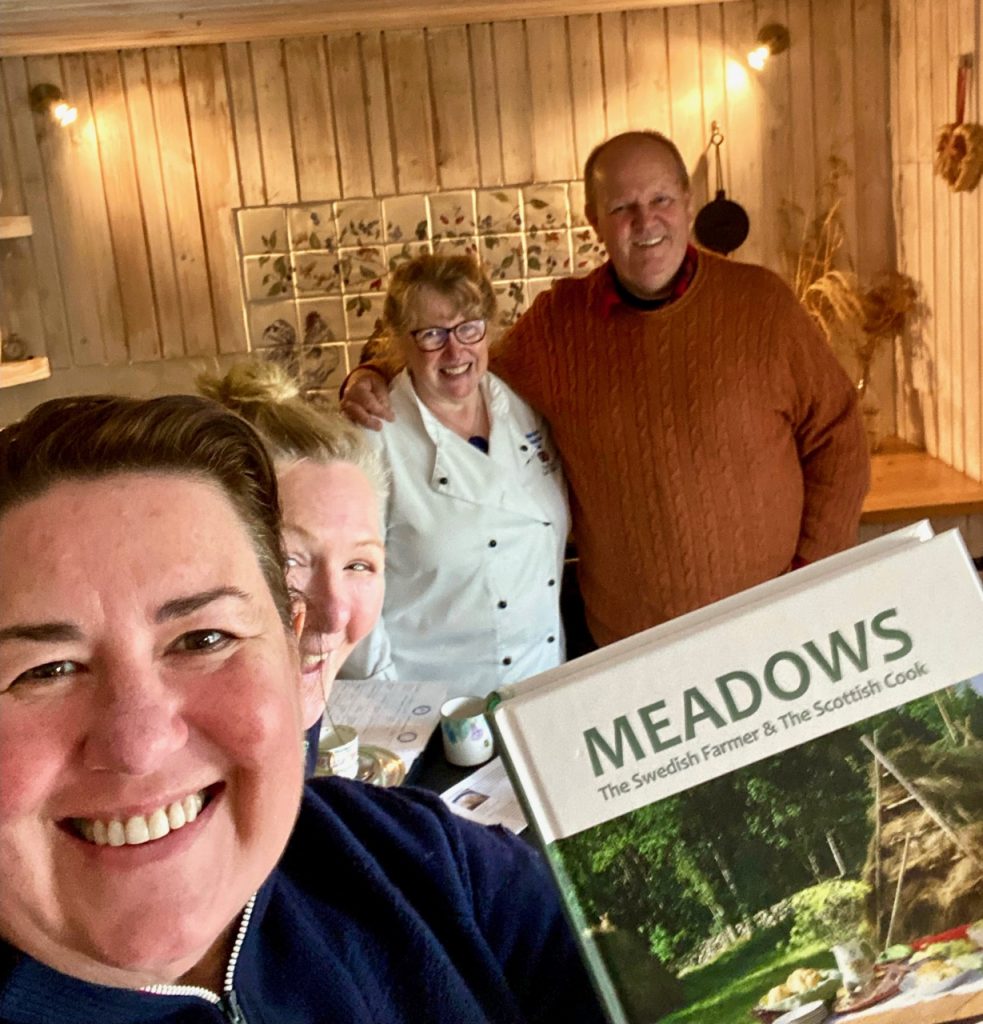
Food tourism is nothing new: the Grand Tour on the canals of Venice or the sparkling Côte d’Azure, experiencing fritto misto di mare and salade Niçoise along the way, returning with paintings, textiles, ceramics, recipes and a desire to embrace cultures new. We can see this today in Scotland as we meet travellers from across the world, hungry to explore Scotland’s food culture, greeting the real people behind the produce. We have just hosted delightful Australians, in collaboration with Tasting Scotland, and had a ball!
Scottish Food Guide also welcomes its the latest members: Dainty Monkey Baking, It’s Just Fruit & Veg, Leonard’s Hemp Seed Tea, Wilson’s Farm & Kitchen, Heritage Bakehouse, Allanton Inn, Allan’s Chilli Produce, Rae’s in Montrose & Sunrise Bakehouse.
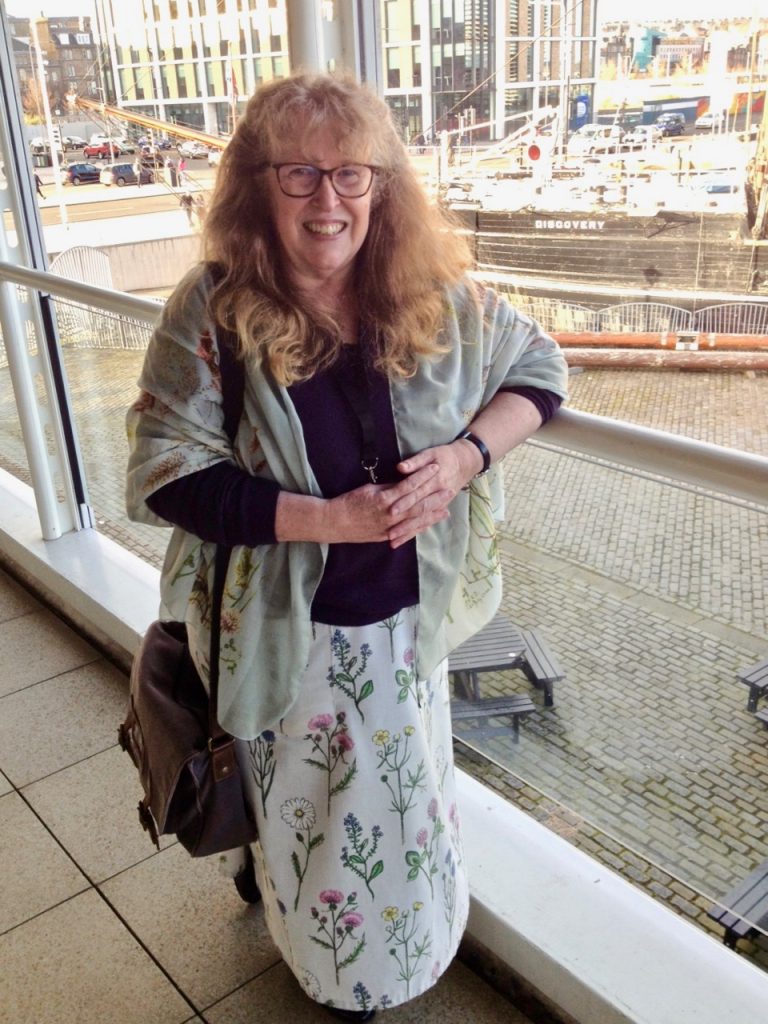
Last month I was invited to speak at the Feeding Tayside Through the Climate Crisis Conference, organised by Bioregioning Tayside at Discovery Point, Dundee. As a Dundee lass, I was on home turf. It was a very worthwhile event with many informative speakers and a will to make change. All power to your elbow Ruth!
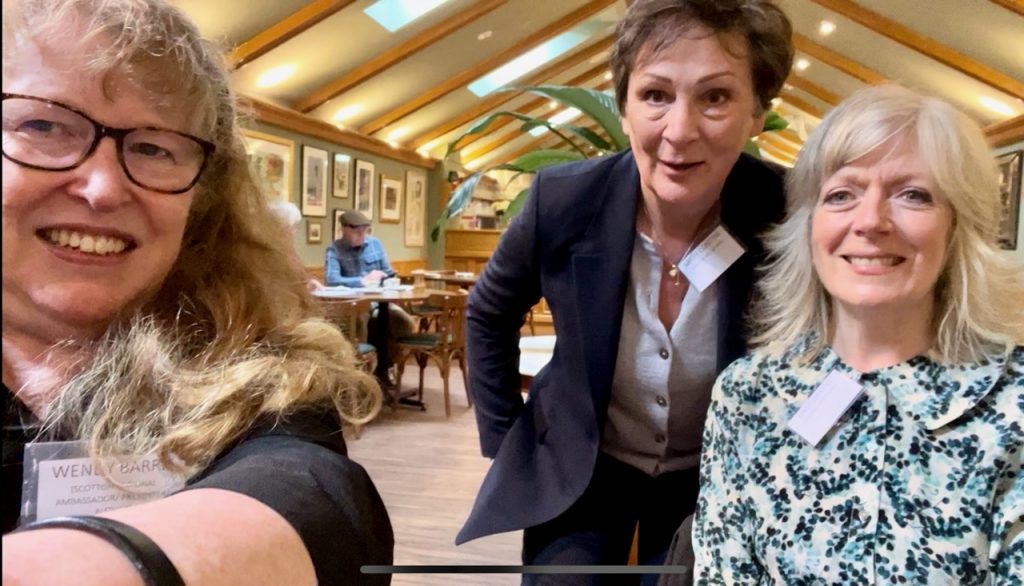
The Food Writer’s Guild had an excellent gathering hosted by Mary Contini and her family at Valvona & Crolla , offering a much appreciated opportunity to explore how we sell ourselves, and our books, along with lively networking and a delicious lunch. My grateful thanks to Mary for inviting me along (pictured with Mary & Cate Devine)
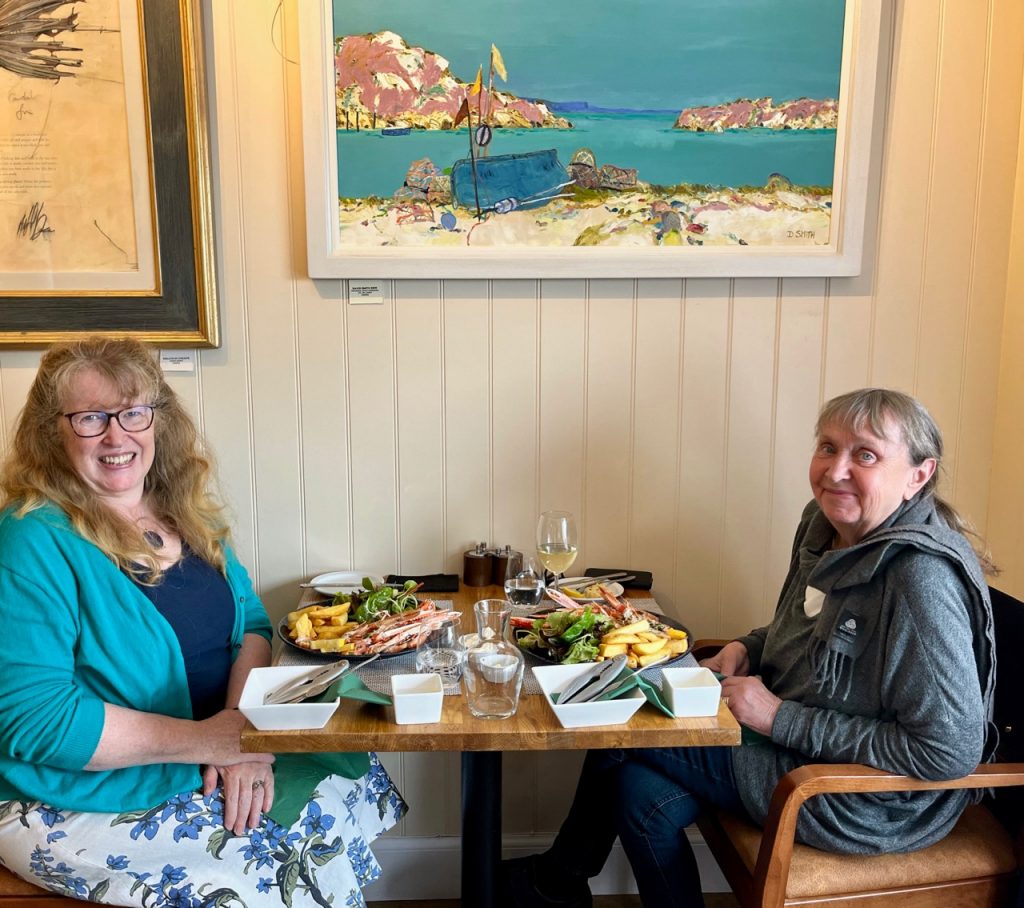
Bosse has planted his heritage grains at Ardross after much digging, raking and sowing on his part and not inconsiderable weeding on mine! I am excited to share tasting the results of our endeveours in due course and thank Ardross for their support. We’ll keep you posted.
Our good friend and Leader of Slow Food Scania was over for a few days and experienced food tourism at its finest in Fife with a wee loop into Perthshire. Sunshine, great food, coastal walks and a guid blether – a delightful combo. (Pictured at The Dory).
Have you planted your tatties yet? There’s still time. We collected ours from Andrew Skea late April and look forward to a wonderful crop of Arran Victory, Pink Fir, Golden Wonder and Epicure. There is nothing quite like howkin’ your own tatties for a delicious summer salad, mouth-watering roasties or gravy-soaked mash.
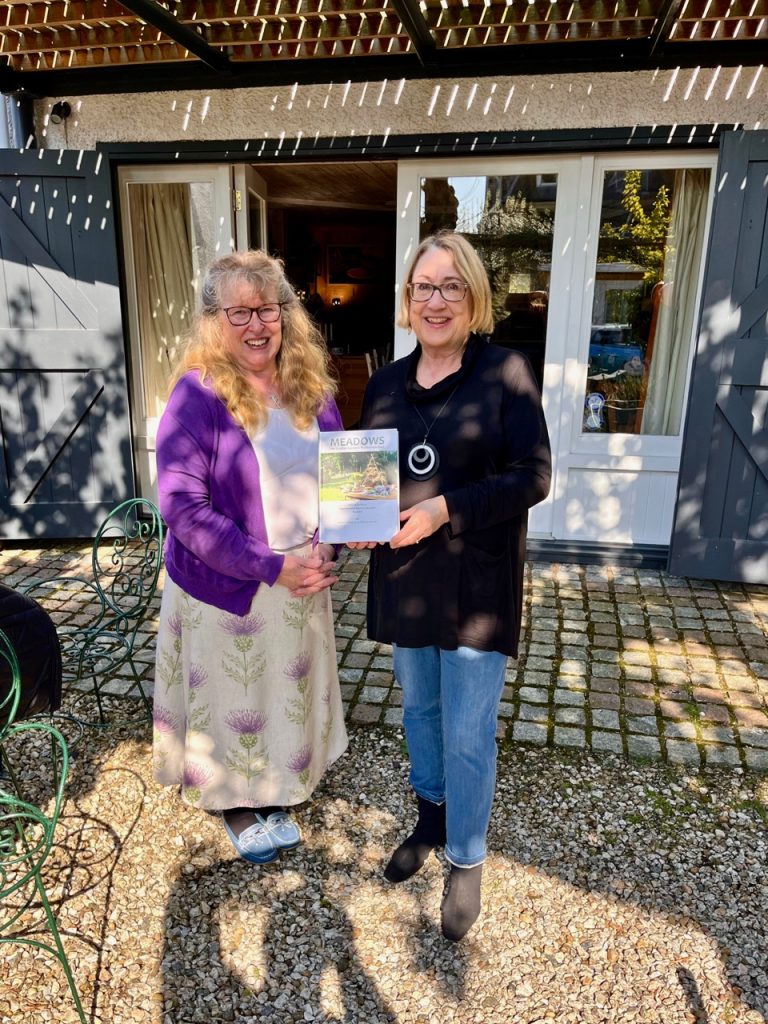
Annabelle Ewing, our local MSP, recently visited Scottish Food Guide HQ and discussed the challenges and opportunities in hospitality today. She was very helpful and really engaged. We have met and held discussions now with a number of parliamentarians and are regular attendees to the Cross Party Food Group. Scottish Food Guide provides a valued service and niche market for many producers and chefs, and is acknowledged as a fount of knowledge and expertise in sourcing and food tourism, with a trustworthy and effective set of connections. It takes years to earn such respect and I am heartened by the warm feedback received. I am confident of its growth and welcome others who feel in tune with the Scottish Food Guide Charter to get in touch.
Travels to Kos
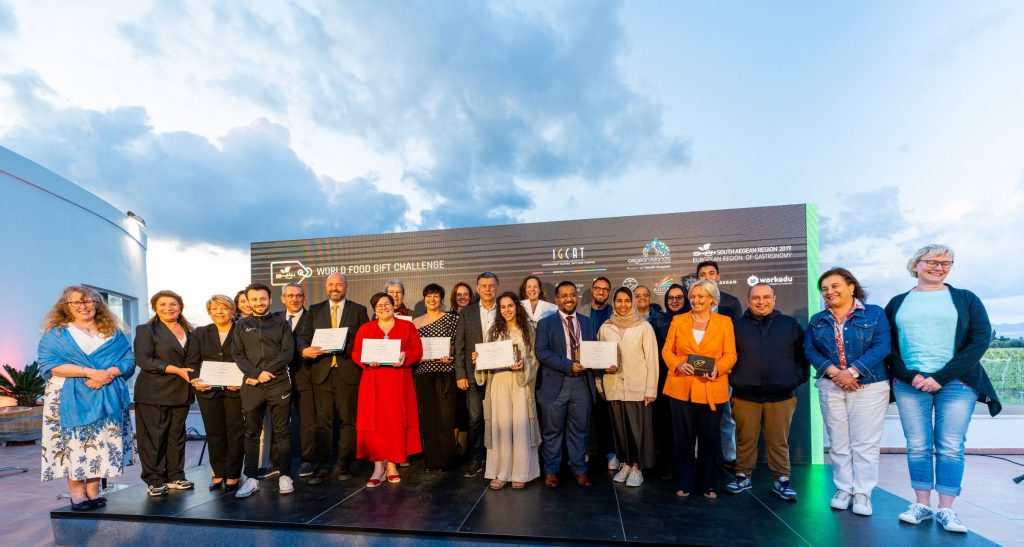
I recently returned from Kos, where, in association with IGCAT, I was invited to judge the World Food Gift Challenge and our hosts, South Aegean – European Region of Gastronomy since 2019, ensured we received an exceptional food tourism experience – worthy of sharing, both as a sincere recommendation to visit this magical isle but also as a shining example of what is possible with collaboration in the community, the power of working together, showcasing excellence and creating an international platform for your region. This event was also designed with a view to connecting and developing knowledge-sharing between all stakeholders and experts present. [image above ©IGCAT]
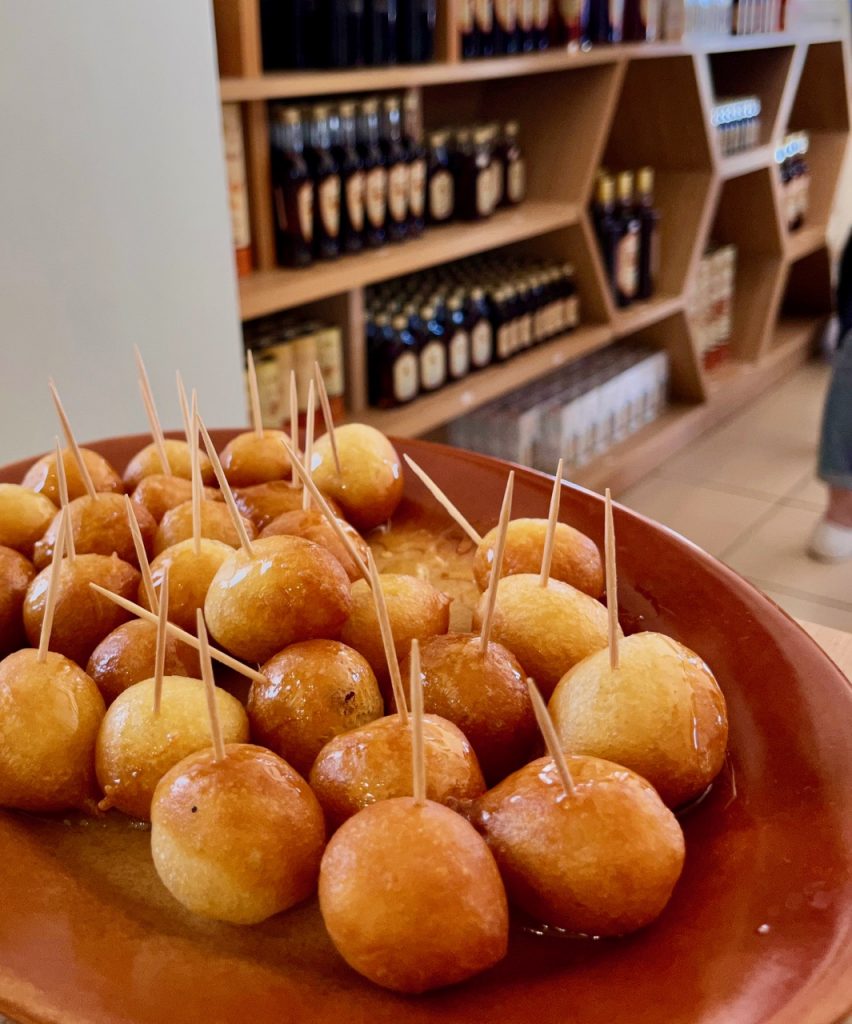
The trip got off to a flying start that faltered when the connecting plane to Athens arrived late and I thought I’d missed my island hop. Fortunately I travel light and as I ran towards ‘gate closed’ with nothing to lose, I found a lone uniformed crew member holding the flight for me – I hardly had breath left to thank her! Arriving at Kos Aktis Art Hotel in the small hours, I slid open my balcony doors and watched the Aegean Sea glistening in the moonlight.
After an imaginative Mediterranean breakfast buffet we were off on our first port of call, the local museum, where presentations were taking place. We heard from Kos Chamber of Commerce, Mayor, Governor and tourism representatives, all sharing a civic pride in their island, part of the South Aegean Archipelago. Coffee was accompanied by the first of many Kos honey balls, loukoumades – essentially dough fritters drenched in honey, a delicious concoction (pictured).
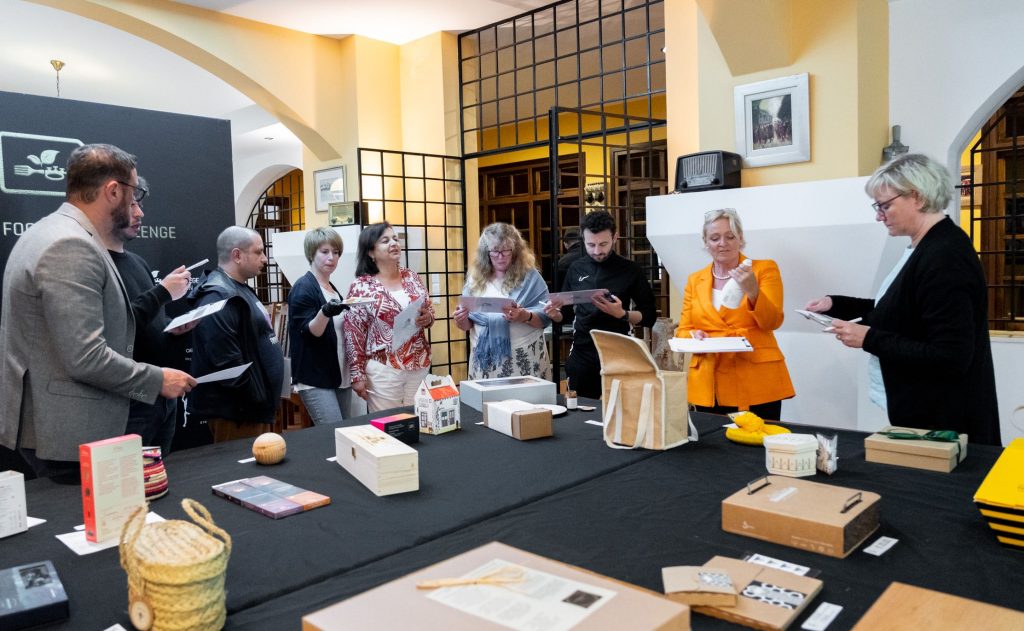
Once each entrant had given their presentation, us judges were whisked off to Ktima Akrani where, down in the cellars, we immersed ourselves in the serious business of evaluating a diverse range of gifts aimed at the dedicated ethical food traveller. After individually scoring and analysing, we collaborated, discussed, debated and considered all aspects of each entry: whether they met their objectives, offered sufficient information for the prospective buyer, assessing product labelling, quality, flavour, packaging and transportation practicalities. There were honeys and preserves, picnics and collections, wines, oils and many more. Full Results here. [image ©IGCAT]
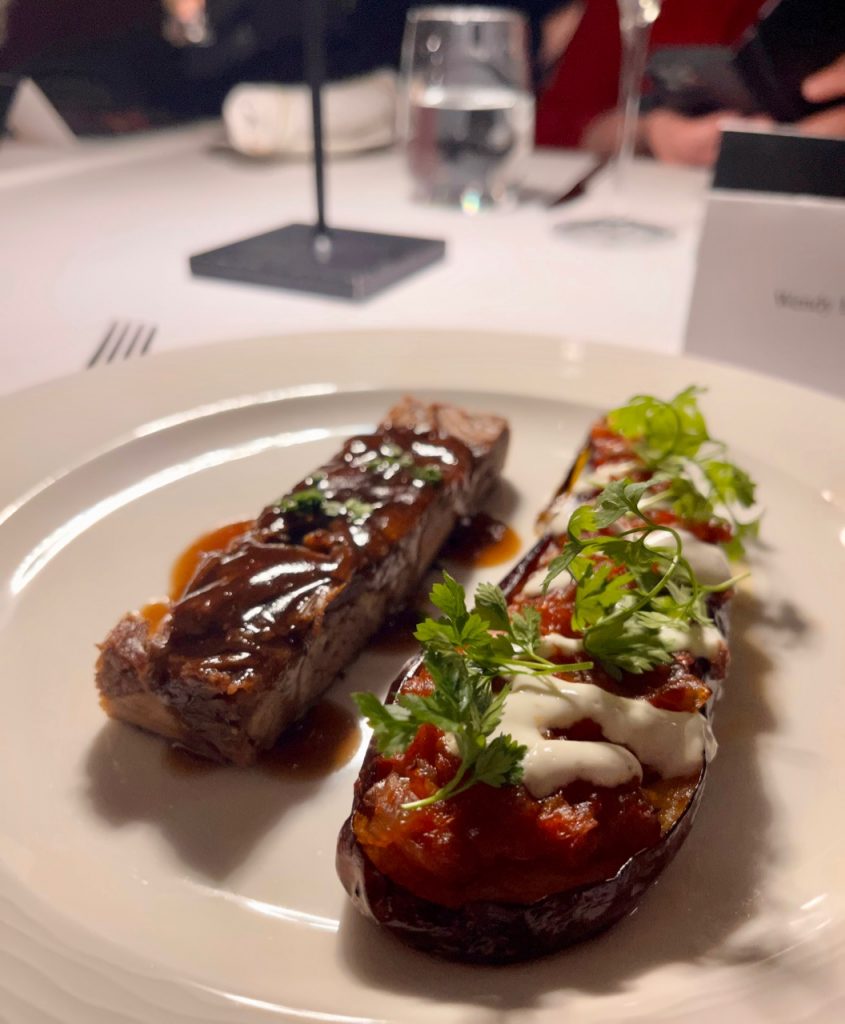
The award ceremony was held at the stunning vineyard in the presence of the Governor of the South Aegean Region, George Hatzimarkos, before the Awards Dinner at The Gelsomino . In the entertaining company of Greek and Finnish colleagues, I dined on celeriac soup, beef fillet tartare with truffle hollandaise, local lamb with eggplant & rosemary sauce, semolina dessert with white chocolate cream.
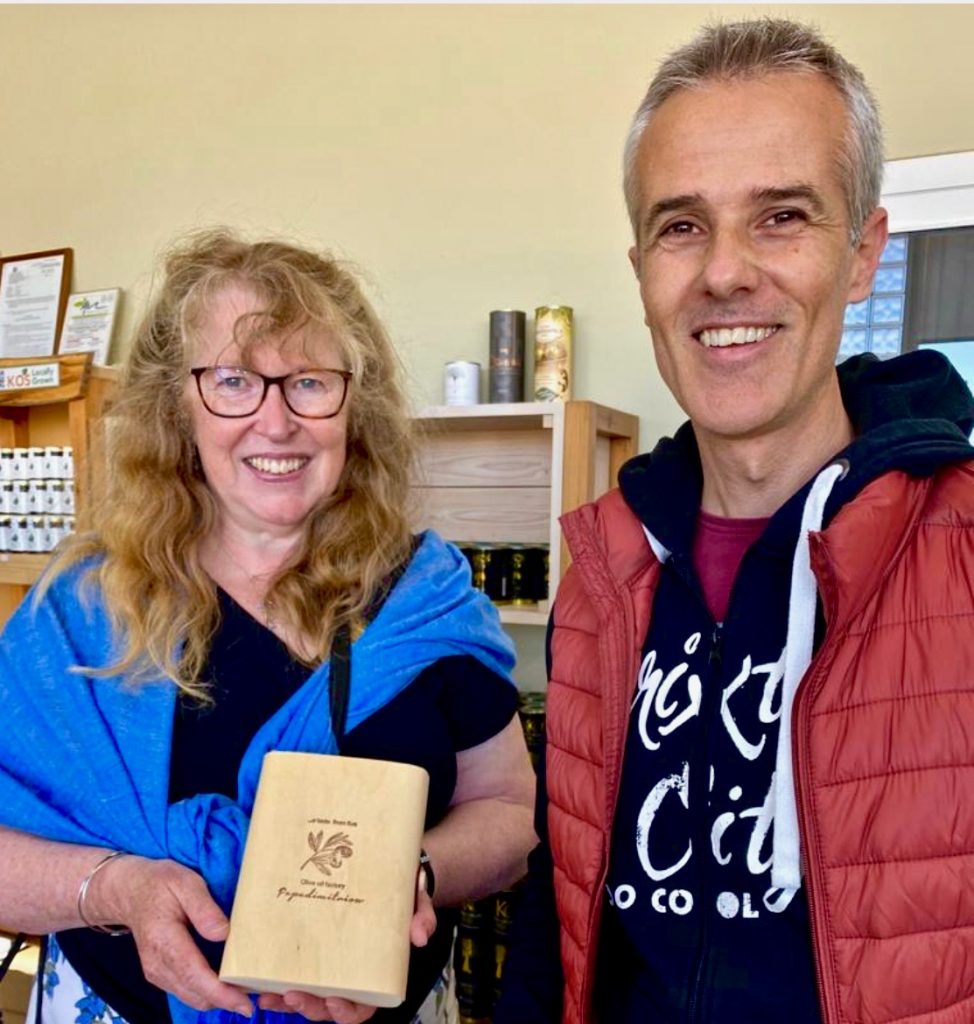
The following day the people of Kos treated both judges and participants to a splendid experience of food travel, visiting stakeholders and discovering best practice, starting with Kos Olive Oil presented by owner Dimitris Papadimitriou (pictured). There are one million olive trees on Kos. “Everyone has at least one, my family has 35” we were reliably informed by our outstanding guide who took us through the day with passion and knowledge. Dimitris has his own family groves but also presses olives for others and uses the by-products for soaps, animal feed, pellets and compost, ensuring zero waste. His attractive on-farm shop was brimming with produce and my box of oils and tapenade will be savoured in Fife.
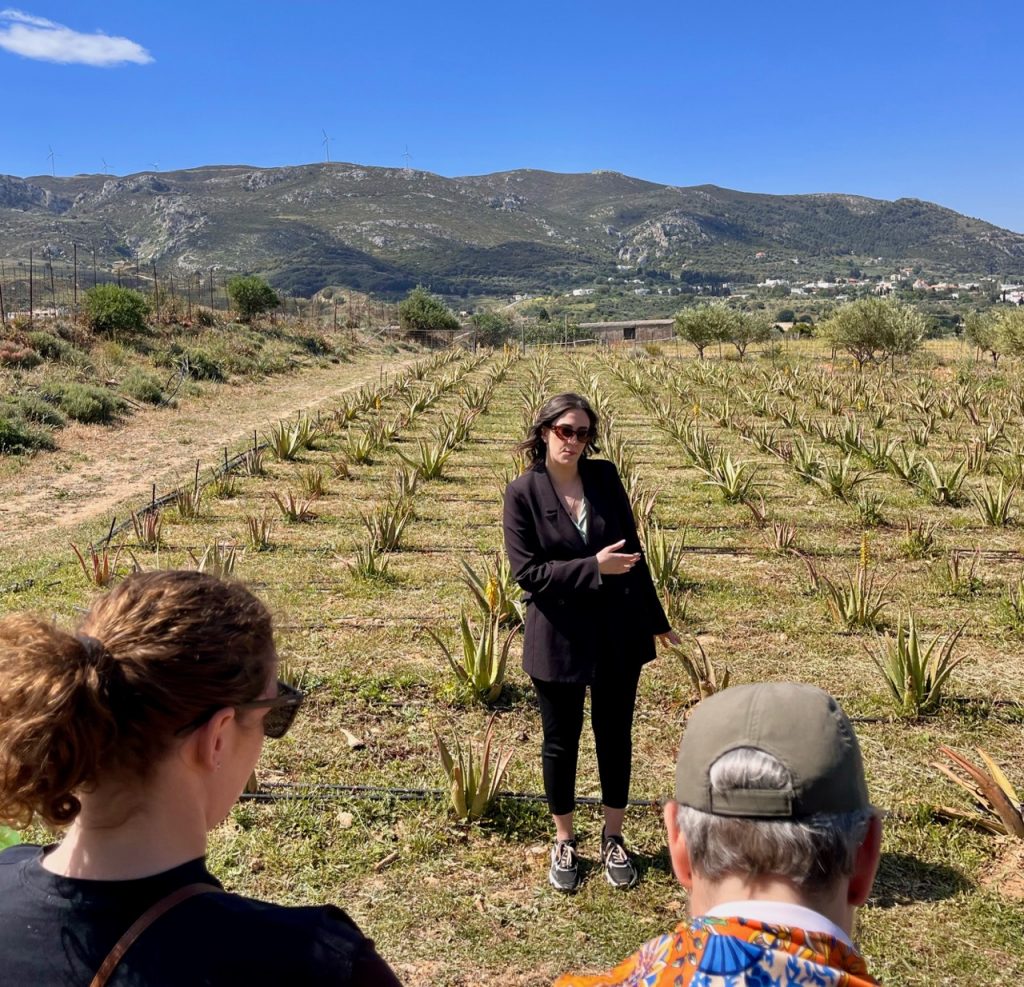
Next stop, the aloe vera farm . Not my specialist subject, I was intrigued to see the plants close-up and hear how they are processed into a range of products. A school group was leaving as our coach negotiated the winding lanes. Education is fundamental if we wish to retain biodiversity, knowledge and ensure a healthy planet so it was lovely to see diverse flora: figs, pomegranate and lavender, all labelled to inform young minds. I also approved of the sheep “weeding” between the aloe vera crop.
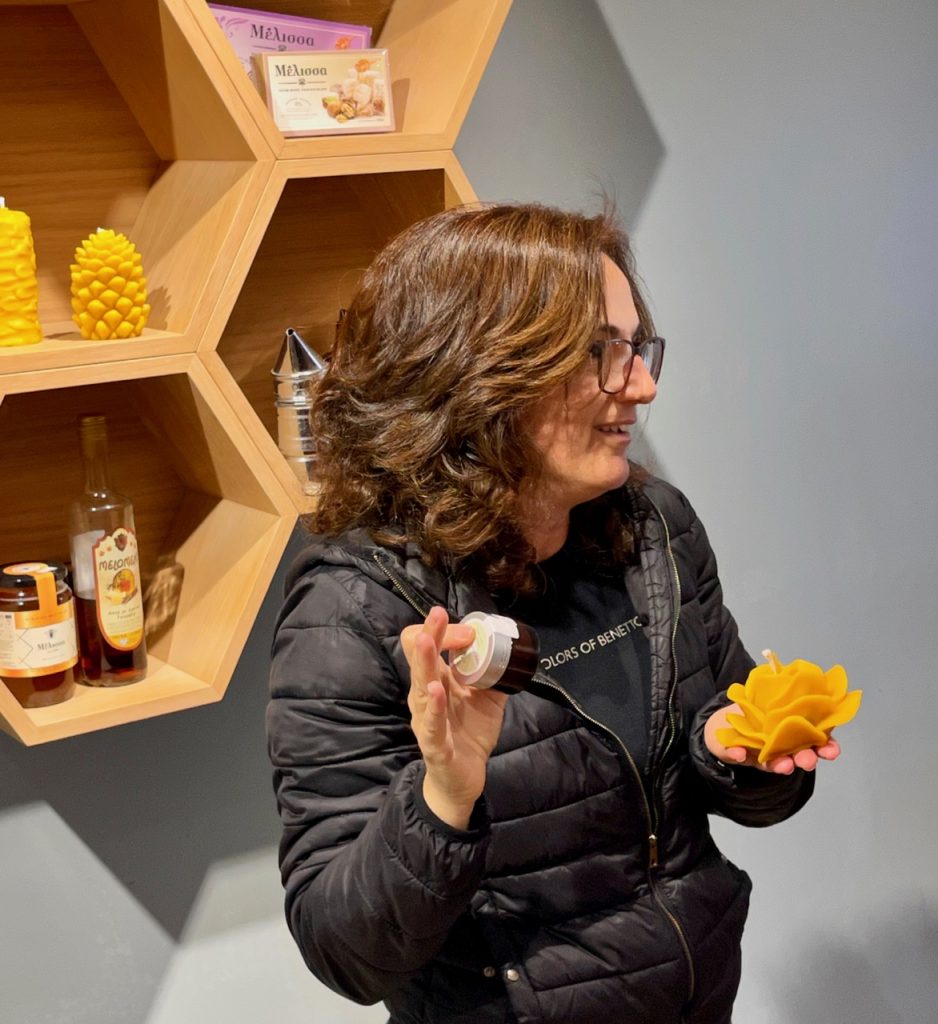
As we alighted at a giant bee sculpture it was a fair guess that honey was next on the day’s menu. This third generation family, Melissa Honey by Kefalos exemplifies honey diversification with creams, salves, liqueurs, beeswax candles and a range of exquisite honeys. Wild thyme grows in abundance on Kos alongside other wild flowers, giving unique and world class flavours to this golden treasure. Where better to have another taste of loukoumades and I have to say these were the winners!
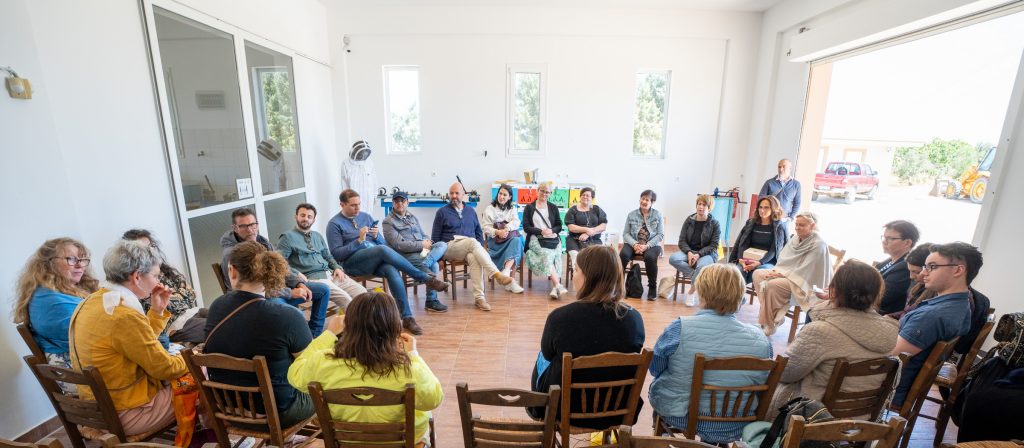
On several occasions we gathered for round table discussions – an opportunity to learn and share, listen and contribute – and the honey stop was one such pause where we discussed food fraud, farm diversification and some of the (few) positives to come out of covid where businesses became opportunists and learnt successful strategies along the way. [image ©IGCAT]
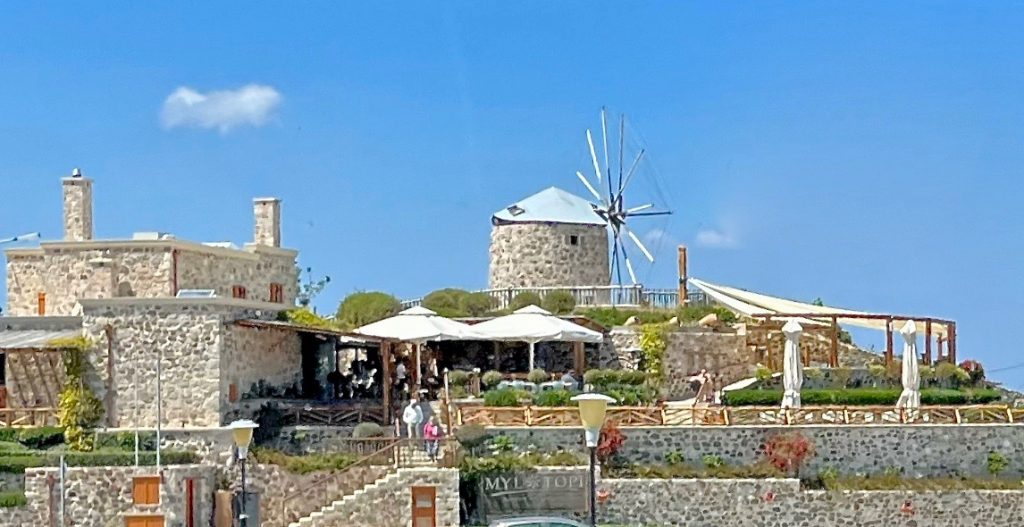
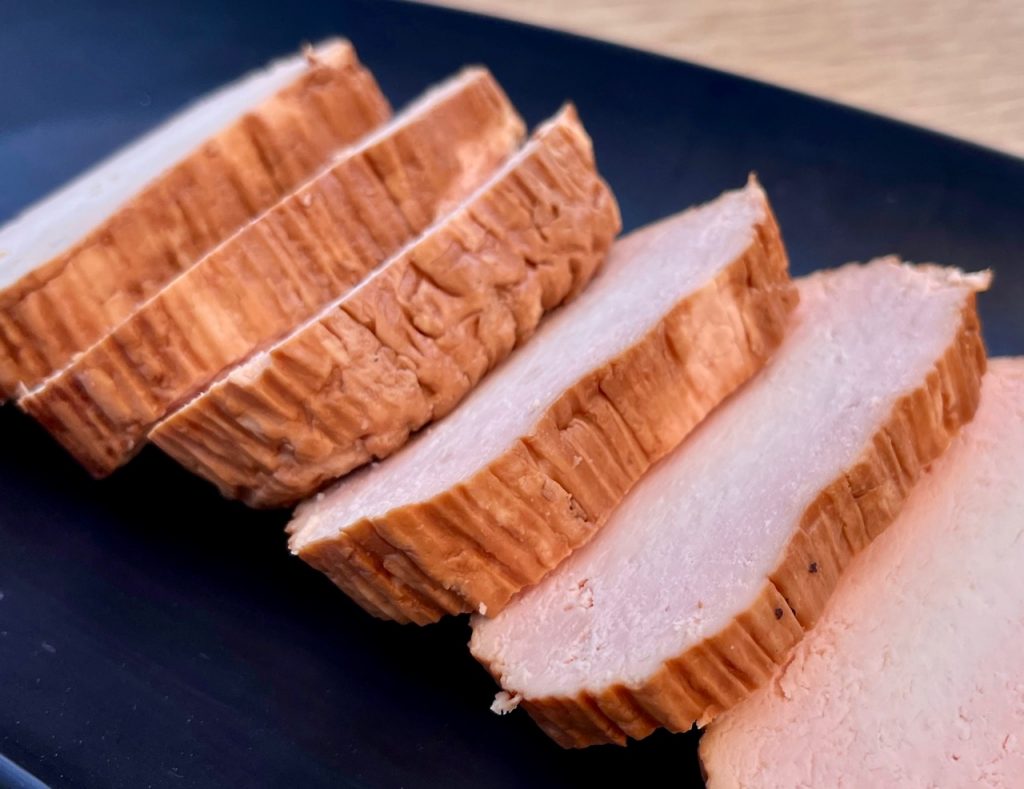
Luncheon at Mylotopi consisted of platters with dolmas, moussaka, fragrant couscous with pork, salads and Krasotyri, the celebrated wine-cheese of Kos, a specialty goat cheese aged in red wine lees for a month, giving it a firm rust-red crust and a snowy white cheese within, the wine imparting sweetness yet the cheese retaining a fresh salty umami. Mylotopi, overlooking the bay of Kefalos, has its own windmill for milling flour – one of only two working mills left on Kos. It was blowing a hoolie when we were there so no milling that day (the sails would be soaring straight to Turkey had they unfurled them) but the miller showed us round this ancient feat of engineering and recounted its fascinating history and restoration. Like a number of places on Kos, the Voudouris family still use their stone oven: lighting olive branches to create high temperatures, sweeping the glowing ash to one side and baking within. Fantastic to see these traditions in action and thriving.
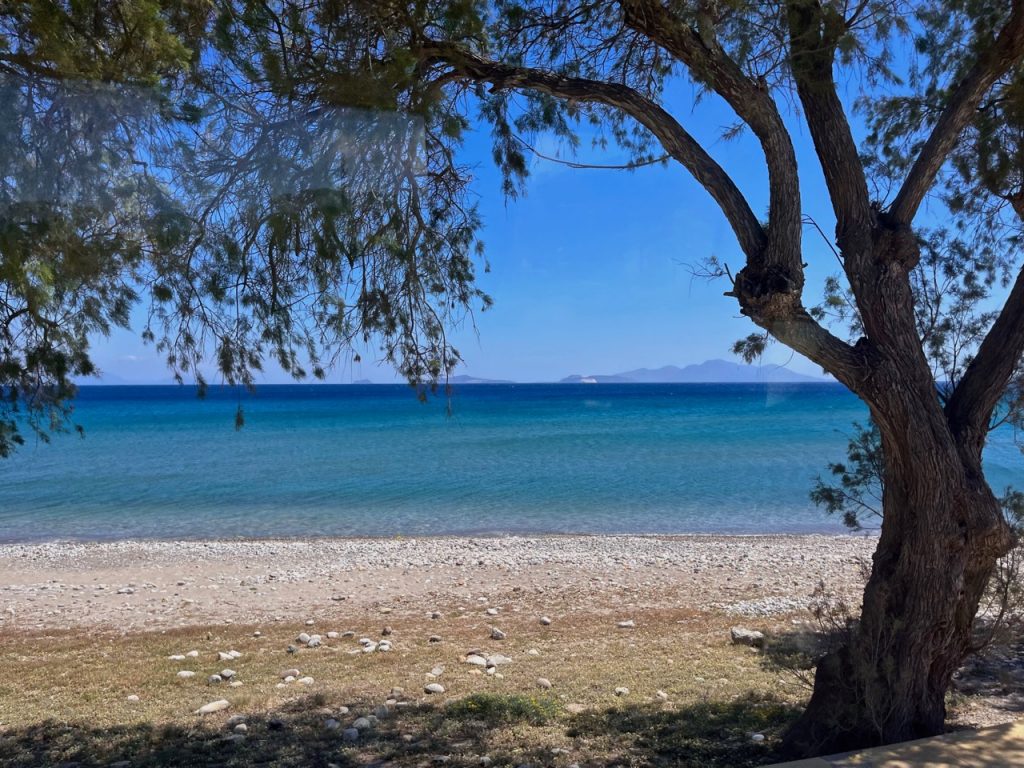
En route to lunch we had passed the “tortoise house,” as our guide described it. A pleasantly rotund design that, with a little imagination, had certain tortoise attributes. During WWII, an Italian soldier had escaped the enemy and hid in the mountains, allegedly living on the wild tortoises, still common today (but not on menu). A local fisherman discovered him and helped him off the island to safety. Years later the soldier returned and sought out the fisherman to ascertain the exact location where he had found him. He proceeded to buy the land, build a home and live on Kos. Our guide was brimming with wonderful tales: from tomato production to pirates, which bays were warmest for swimming, and the Airbnb effect on property prices for locals, just like here. He also explained why Kos was a powerhouse in ancient times. Water. Kos is fortunate, with a natural supply of fresh water (to this day), vital for all forms of life and of course also made it a desirable target for invasions – and pirates. We explored the whole isle that day under the Greek sun with the Turkish skyline clearly visible: house cows grazing meadows, goats for cheese production, sheep scattered on the slopes, olive groves and fruit trees in blossom. The people of Kos had worked collaboratively, done their homework and produced food tourism par excellence.
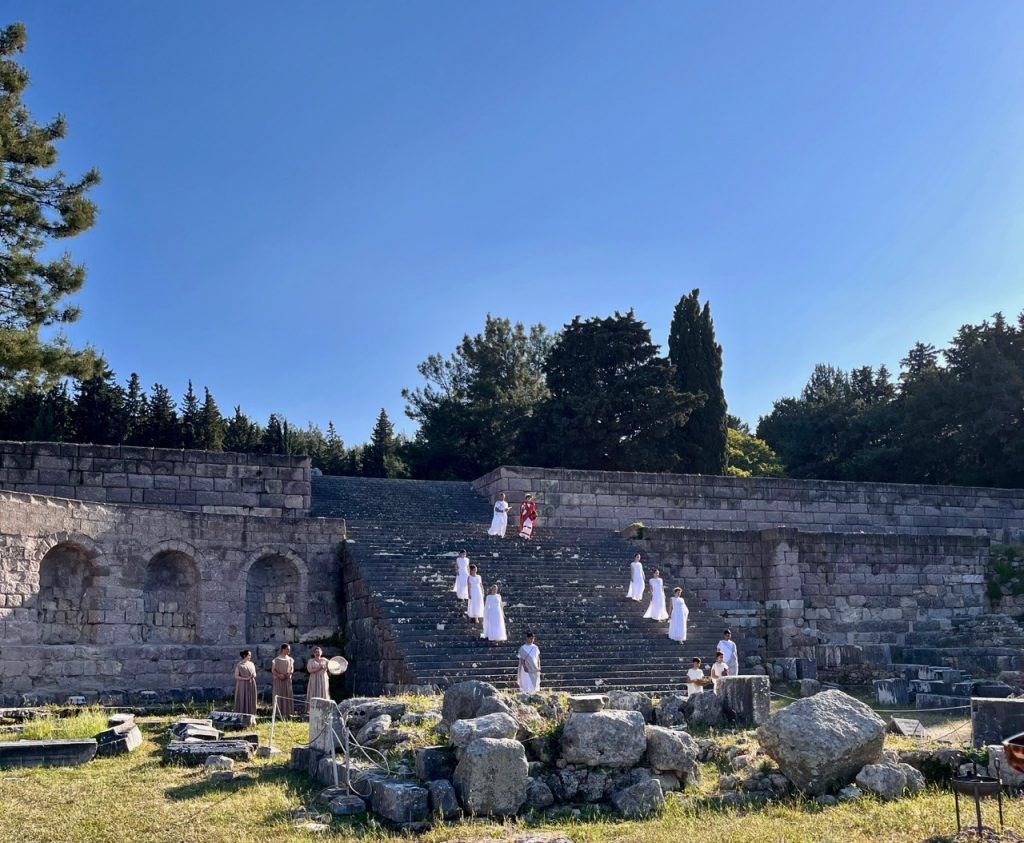
Our last call before a sunset mountain dinner at Zia, was to the ruins of Asklepieion and the International Hippocratic Foundation . We were treated to an atmospheric re-enactment of the Hippocratic Oath from an amateur dramatic group at the breath-taking Asklepieion, and a museum tour from Theodossis Diakogiannis who had us enthralled at his depth of knowledge and the range of medical devices, (gory moments included), medicinal herbs and implements on display.
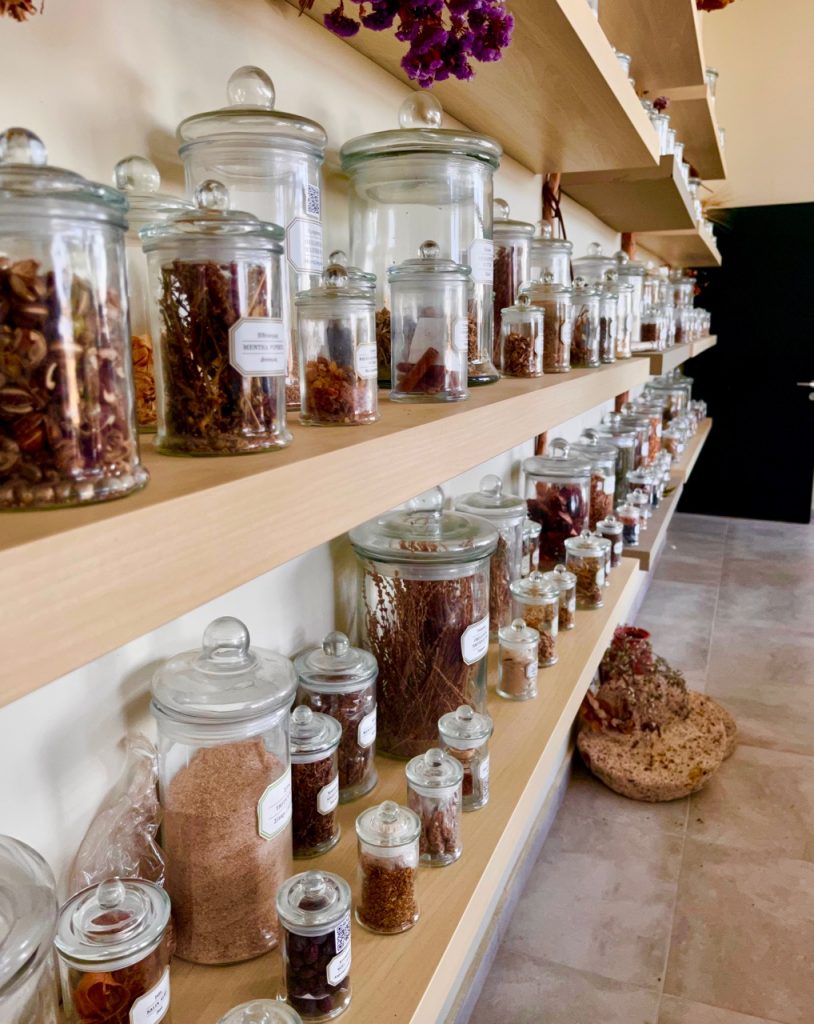
Hippocrates, The Father of Medicine, was born on Kos. Credited as the earliest exponent that diseases occur, not from the wrath of the gods or superstition but from environmental factors, diet and way of living, he set great store in us all taking responsibility for ourselves, and our destiny – albeit he hedged his bets and kept the gods on side too. He was noted for his professionalism, discipline and scrupulous attention to all aspects of his practice. He was a pioneer in nutrition and health, separating science from religion.
Hippocrates, for example, prescribed willow for pain relief and centuries later a German scientist decided to systematically investigate such claims. This particular line of research led to the invention of aspirin. Many of Hippocrates’ natural remedies to alleviate symptoms have proved wholly accurate and are used in pharmacy to this day. Ancient wisdom is too often buried yet so much has come to pass. The staff with snake, the emblem of pharmacies worldwide, originated from these ancient Greeks. Snakes have a complex symbolism for renewal and magic, venom and cure – sometimes there is indeed a fine line, using poisons to cure ills. Not my specialist subject you’ll be glad to hear.
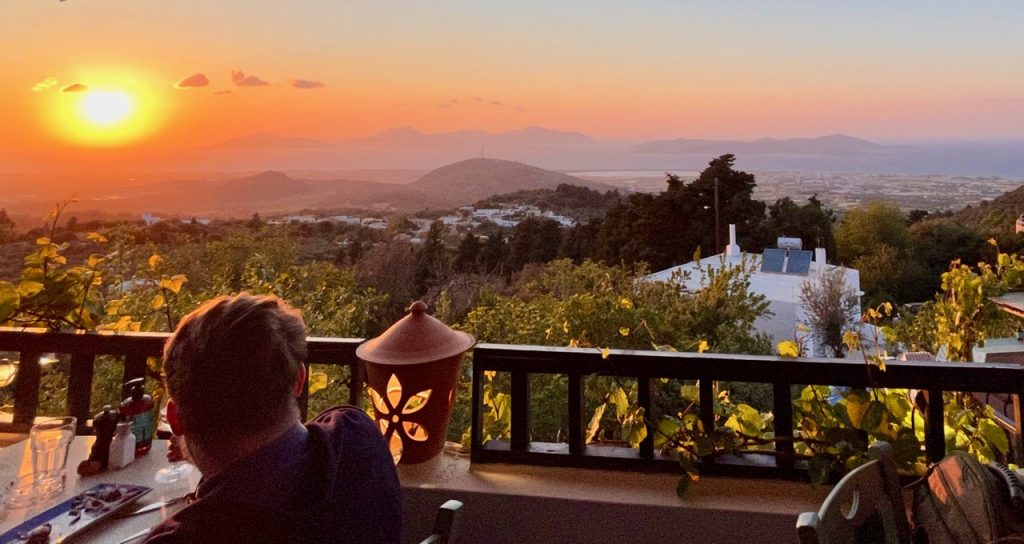
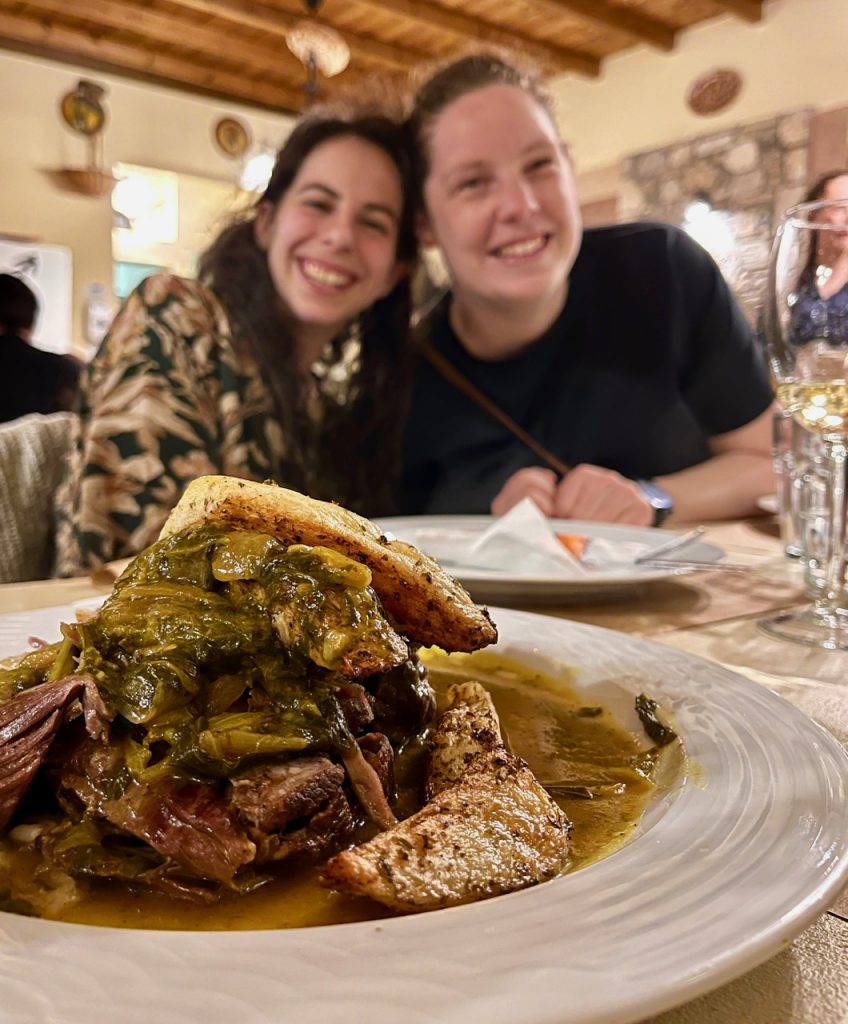
The sunset from Zia at Oromedon was truly spectacular – as was their goat dish (pictured), slow cooked outside in a traditional stone oven, its door cemented with damp soil, left undisturbed for 12 hours before the seal is cracked open and the meal revealed. Proprietor Nikos Papakonstantinou has been on a mission to showcase traditional Dodecanese flavours and revive Kos food culture since he opened his beautiful restaurant in 1998.
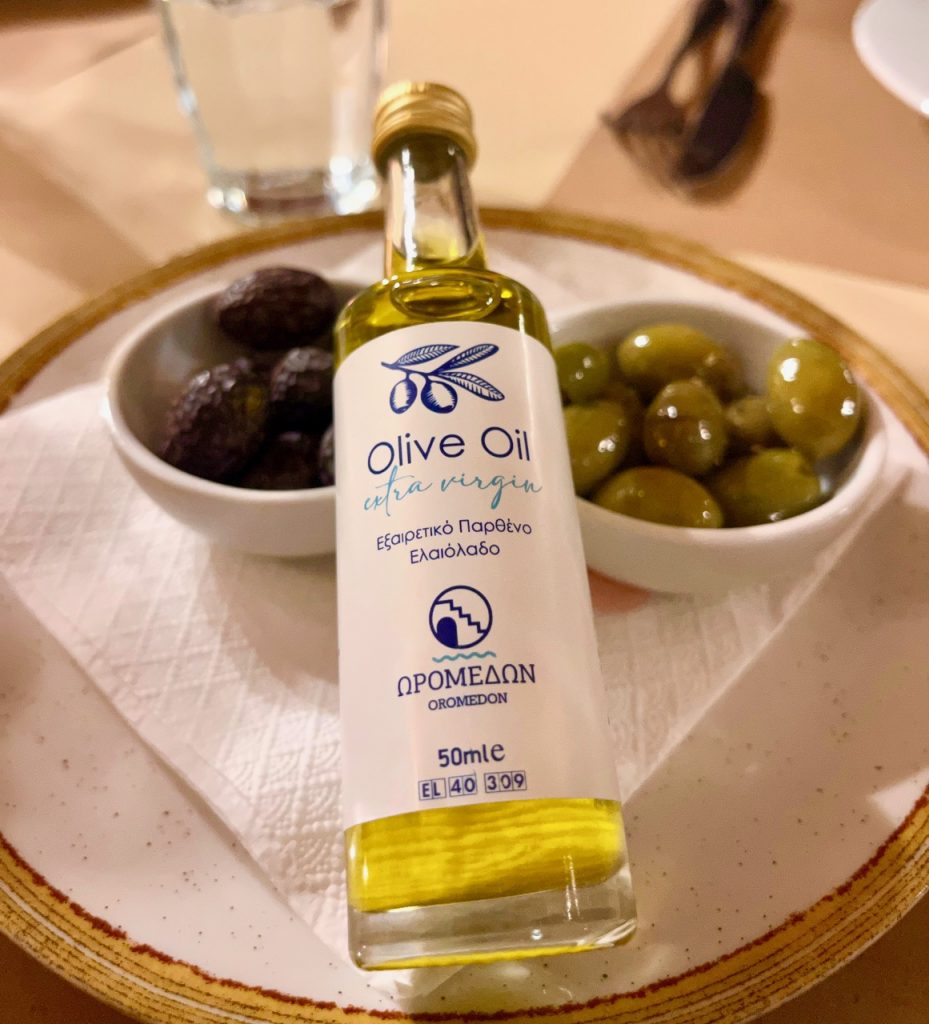
His passion for good food extends to growing his own tomatoes, aubergines and many other vegetables. He showed me his fields of vegetables on his mobile. It was a privilege to talk the common language of good food with him that evening. The night ended with traditional Greek dancers, tuition and taking to the floor – some with flaming ouzo included!
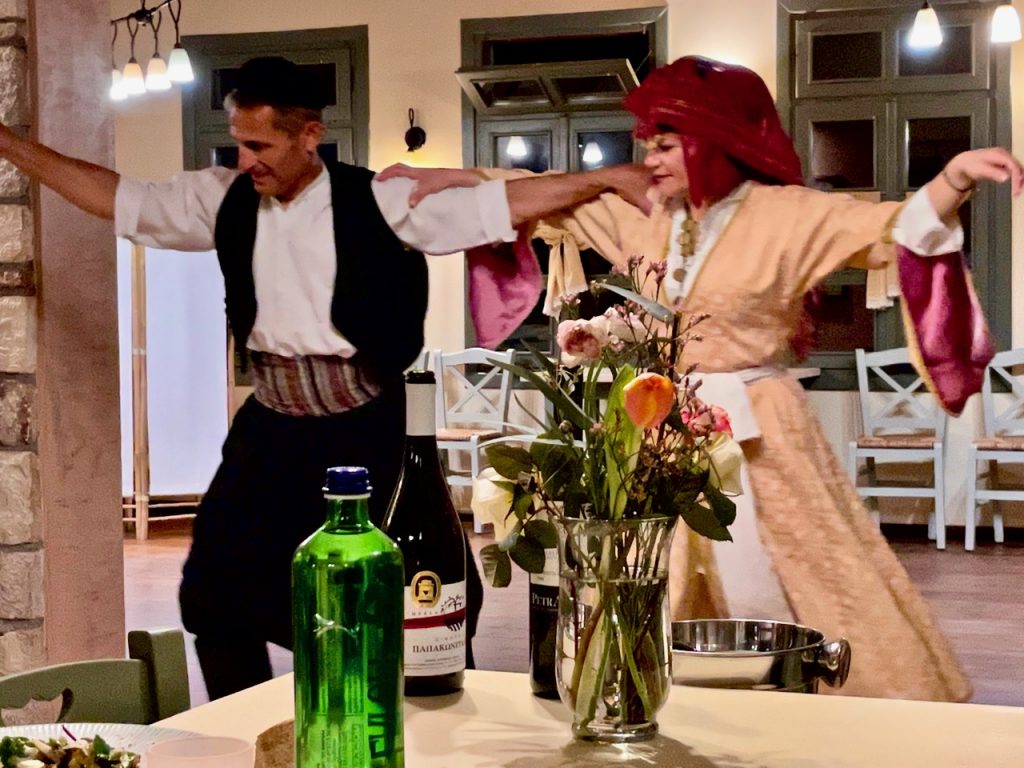
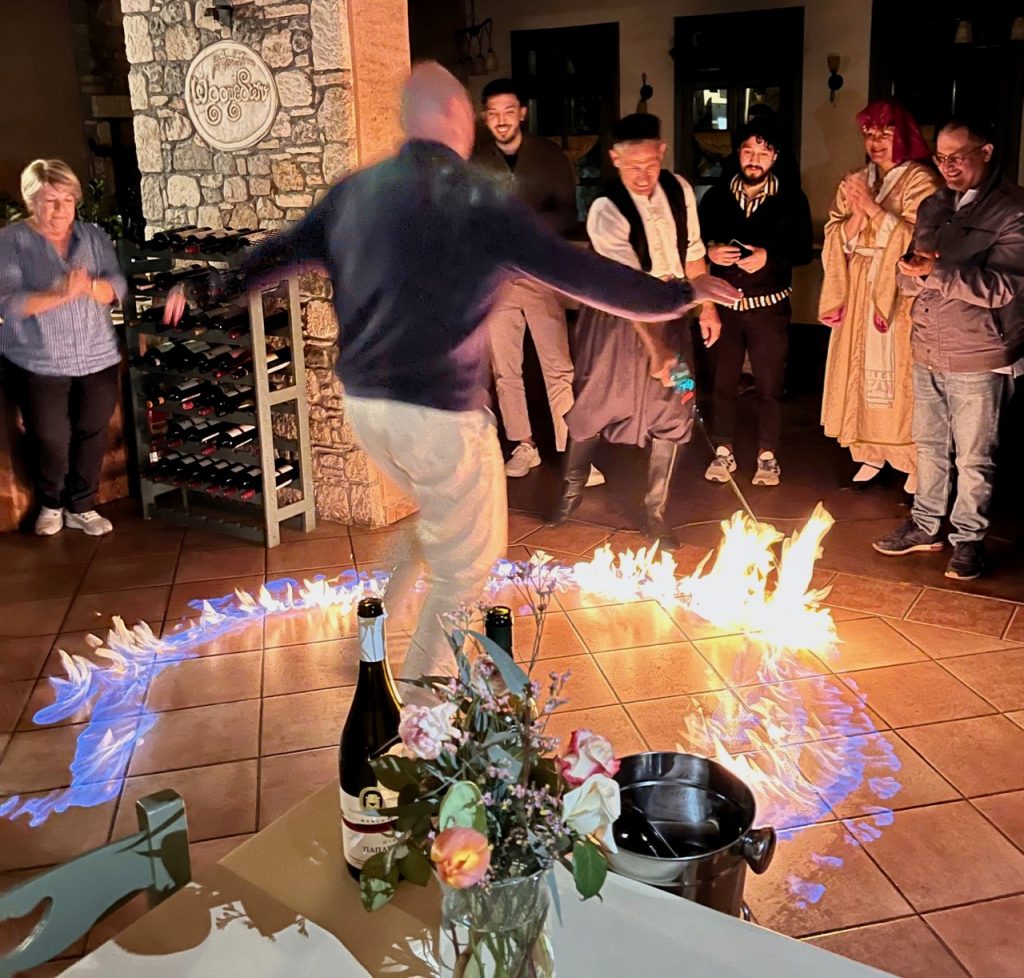
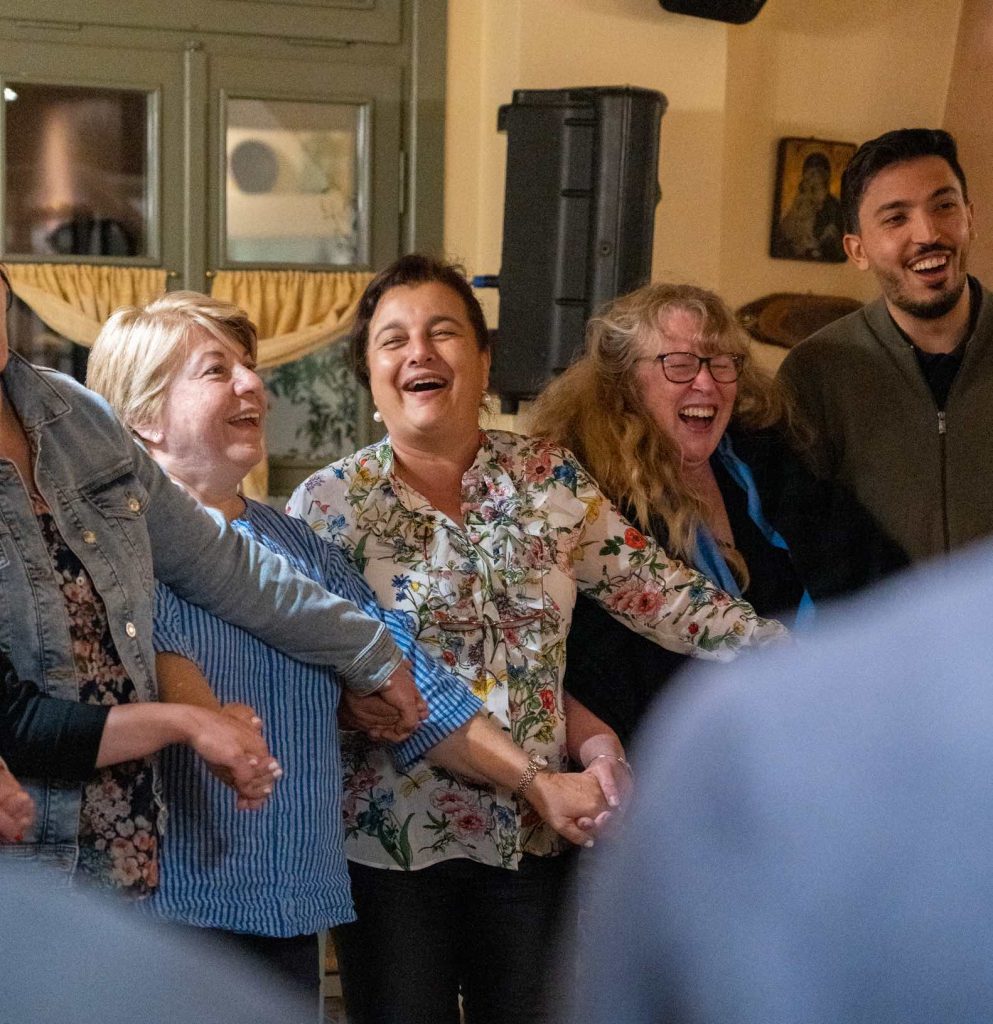
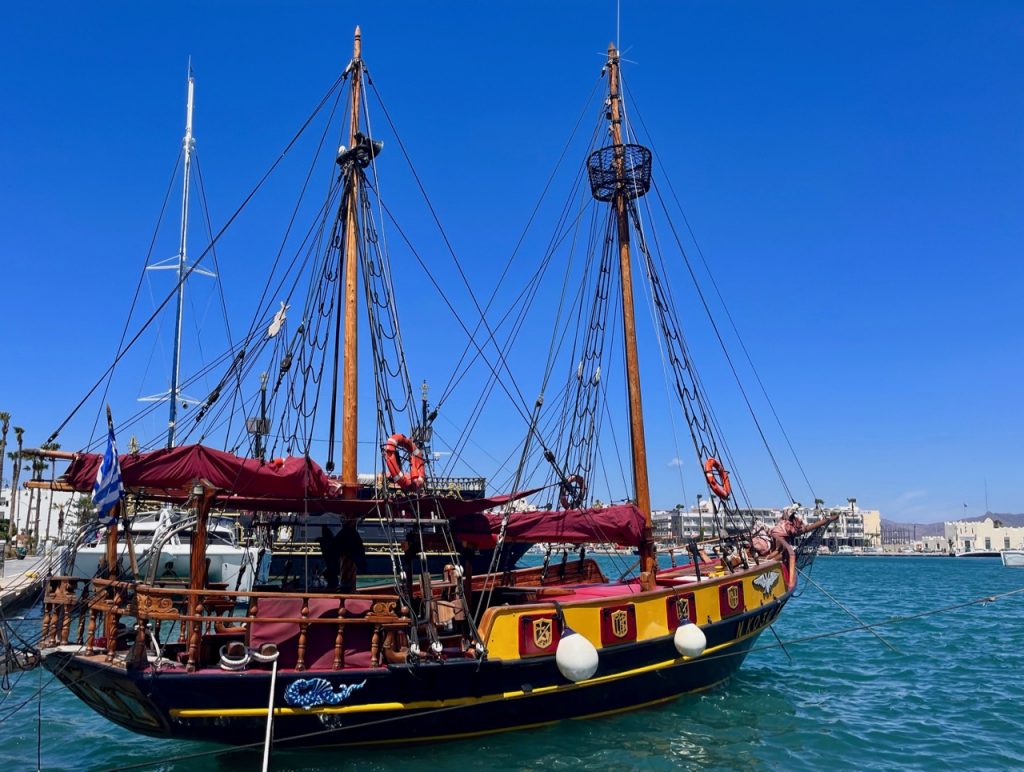
[final image above ©IGCAT]
Walking by the ancient harbour on my last day among “pirate” ships and small fishing fleets, schooners and gin palaces, bazaars and basilicas, with glimpses of ancient ruins and age-old olive trees between vibrant streets, it was easy to imagine Kos’ past under the Aegean sun.
If you have read thus far (thank you) I have one last word on Hippocrates. I naively wondered if there was some link between Hippocrates and hypocrite – the answer is no however the extended answer is fascinating. You can skip this if you know already…
It starts with an anglicised oft-misspelling or spellcheck anomaly. Hippocrates is from the Greek words, hippos (meaning horse) and kratos (power/authority), so combine the two and you have someone who has power over his horse (still a potent symbol in many cultures). Such a name would have had social status among the elite in society. Hypocrite on the other hand is simply the Greek word for actor. Indeed if an actor had a passport it would have said hypocrite under occupation. The negative connotations came much later. Isn’t language fascinating?
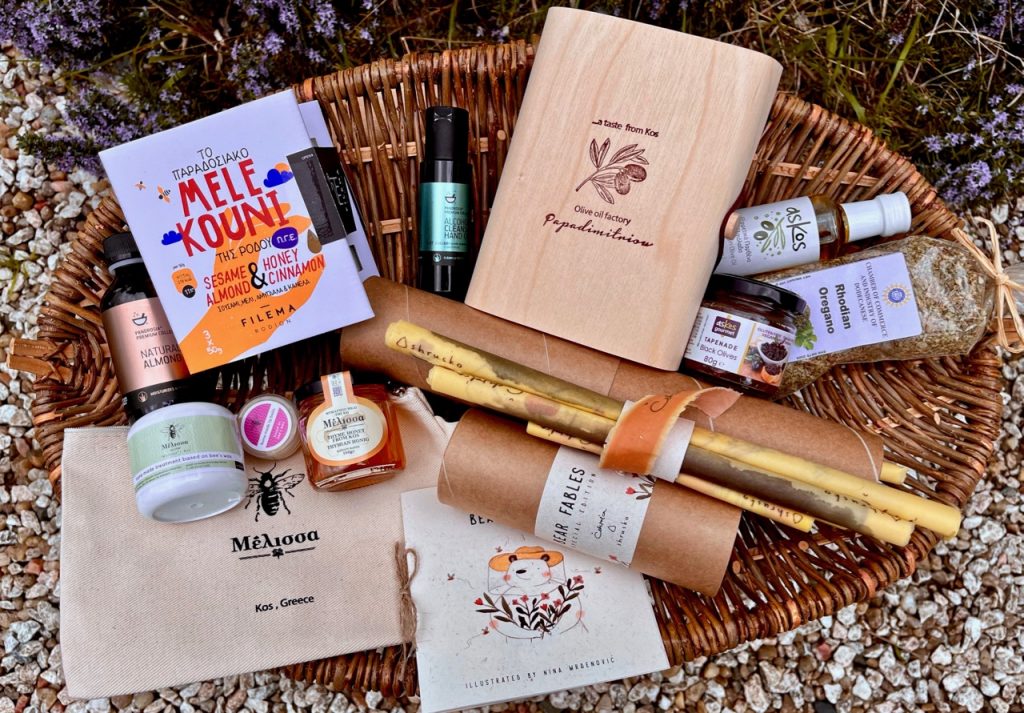
Spring is turning to summer with splendid blossoms a promise of autumn harvest, and early fruit and greens already available. We have much to be thankful for and I know many of you are incredibly busy, endeavouring to make hay while that sun shines, and quite right too. I wish every reader a truly fruitful year.
